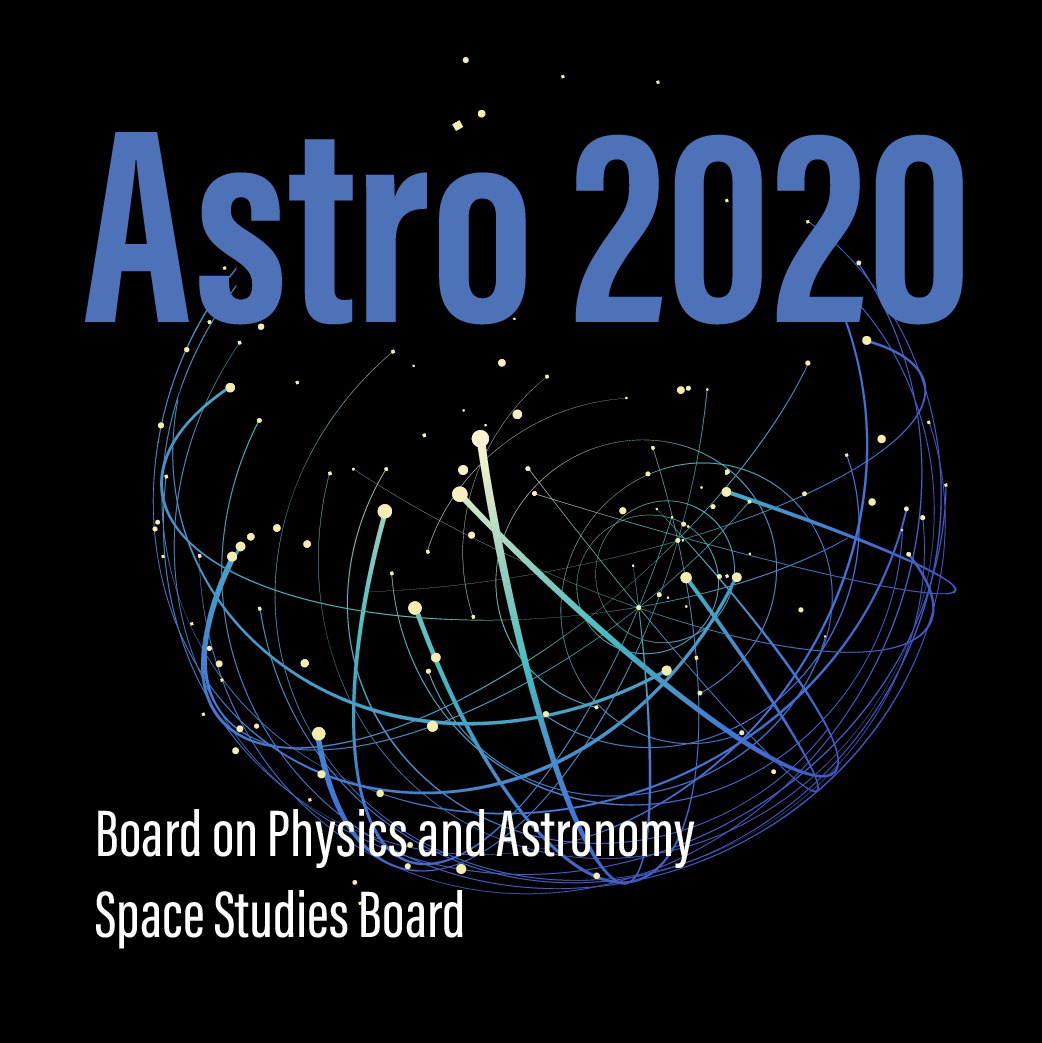Bulletin of the AAS Publishes Astro2020 White Papers
** Contact details appear below. **
 What are the big research topics that astronomers will be working to address in the next decade? No need to pull out a crystal ball — astronomers have a pretty good guess, and they've shared what they think in a series of "white papers" that are part of the 2020 Decadal Survey on Astronomy and Astrophysics (Astro2020), a process that occurs every 10 years under the oversight of the National Academies of Sciences, Engineering, and Medicine. During this process, the astronomy community comes together to summarize the current state of the field and identify key science priorities for the upcoming decade. These recommendations then serve as a guide for scientists, policy makers, and funding agencies over the next 10 years.
What are the big research topics that astronomers will be working to address in the next decade? No need to pull out a crystal ball — astronomers have a pretty good guess, and they've shared what they think in a series of "white papers" that are part of the 2020 Decadal Survey on Astronomy and Astrophysics (Astro2020), a process that occurs every 10 years under the oversight of the National Academies of Sciences, Engineering, and Medicine. During this process, the astronomy community comes together to summarize the current state of the field and identify key science priorities for the upcoming decade. These recommendations then serve as a guide for scientists, policy makers, and funding agencies over the next 10 years.
Astro2020 began with various calls for so-called white papers, brief write-ups to be submitted by individuals or collaborations within the astronomy community. These white papers are next reviewed by a steering committee made up of prominent members of that community. Finally, the committee — with input from topical panels, subcommittees, town halls with various stakeholders, and more — writes a report that describes the current state of the field, identifies research priorities, and makes recommendations for new ground- and space-based telescopes, instruments, and research projects to be undertaken during the next decade to help answer the most important cosmic questions.
The first Astro2020 white-paper call closed in March. The assignment: "succinctly identify new science opportunities and compelling science themes, place those in the broader international scientific context, and describe the key advances in observation, experiment, and/or theory necessary to realize those scientific opportunities within the decade 2020-2030."
The result? A collection of 573 white papers from astronomers summarizing the most interesting research questions that are driving the field forward as we approach 2020. Want a glimpse of what's interesting in astronomy right now? All you have to do is look through these papers to get a very good idea.
For this Decadal Survey, the American Astronomical Society (AAS) is collecting the submitted white papers and making them available in a central location: the Bulletin of the American Astronomical Society, newly relaunched as an online open-access journal. A list of all 573 science white papers has been published there, with titles, authors, and the paper PDFs (for those authors who did not opt out of publication). Each paper is also indexed in the SAO/NASA Astrophysics Data System so that it can be found and cited in the future.
The white papers cover the full range of topics in contemporary astronomy and astrophysics, including planetary systems, star and planet formation, stars and stellar evolution, formation and evolution of compact objects such as neutron stars and black holes, resolved stellar populations and their galactic environments, galaxy formation and evolution, cosmology and fundamental physics, and multi-messenger astronomy incorporating electromagnetic radiation, energetic particles, and gravitational waves.
The papers published now were submitted to the call for science white papers in March. There is currently another call open for white papers on other activities and projects, as well as on the state of the profession, with a deadline of 10 July. Those additional white papers will be included in the BAAS as well. Check back for them later this year, and keep an ear to the ground as the year progresses for more news from Astro2020.
Contacts:
Rick Fienberg
AAS Press Officer
+1 202-328-2010 x116
Julie Steffen
AAS Director of Publishing
+1 202-328-2010 x125
Links:
- Astro2020 Decadal Survey
- Astro2020 Science White Papers in the BAAS
- Abstracts of White Papers in the SAO/NASA Astrophysics Data System (ADS)
Written by Susanna Kohler, AAS Nova Editor.
The Bulletin of the American Astronomical Society (BAAS) publishes abstracts of meetings in the astronomical sciences, obituaries of AAS members, commentaries about the discipline, and white papers of broad interest to the community.
The American Astronomical Society (AAS), established in 1899, is the major organization of professional astronomers in North America. The membership (approx. 7,500) also includes physicists, mathematicians, geologists, engineers, and others whose research interests lie within the broad spectrum of subjects now comprising contemporary astronomy.
The mission of the AAS is to enhance and share humanity's scientific understanding of the universe, which it achieves through publishing, meeting organization, education and outreach, and training and professional development.

